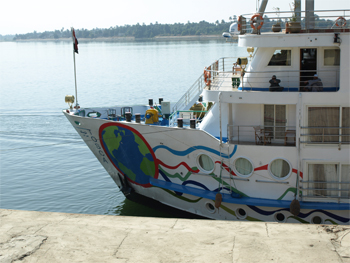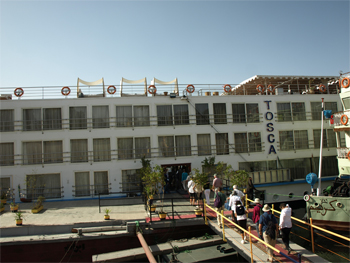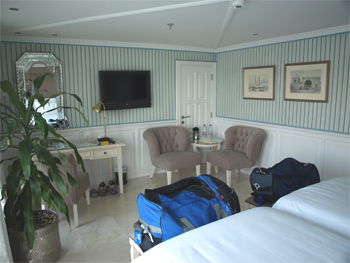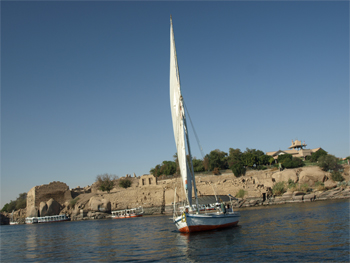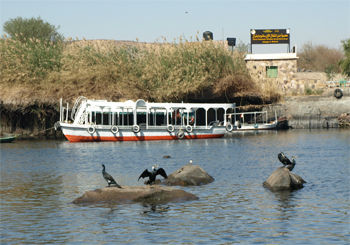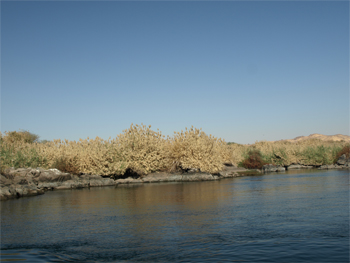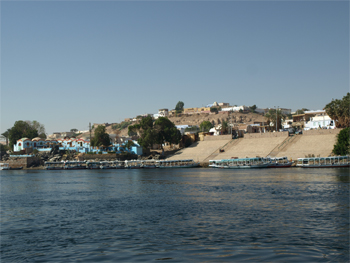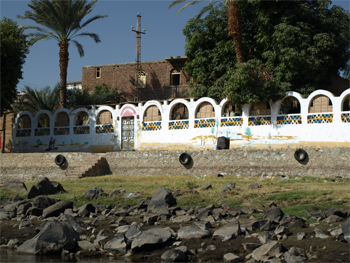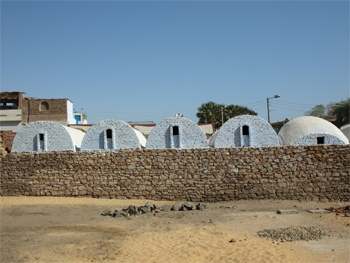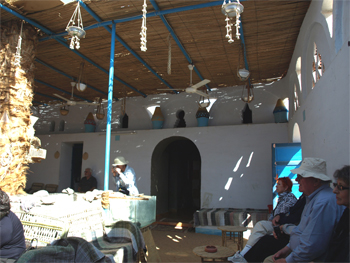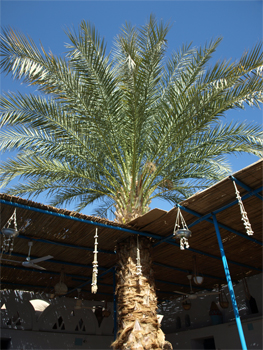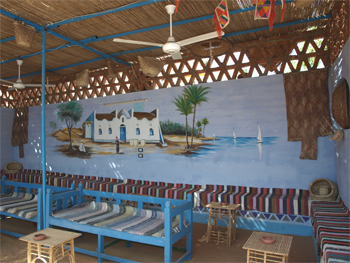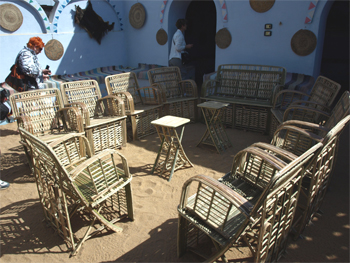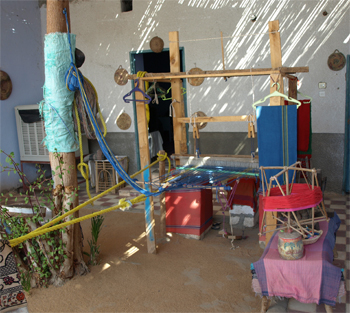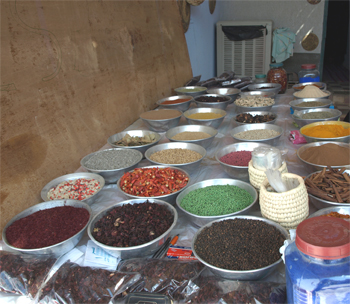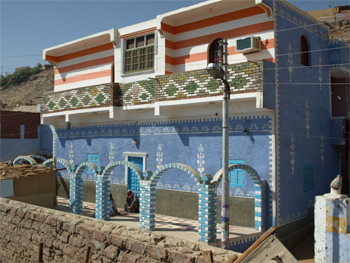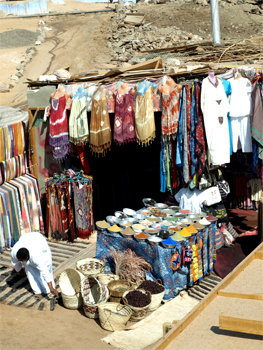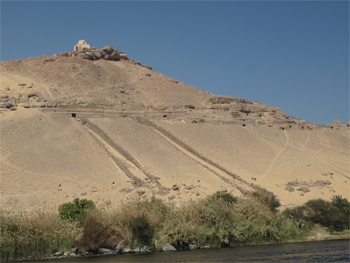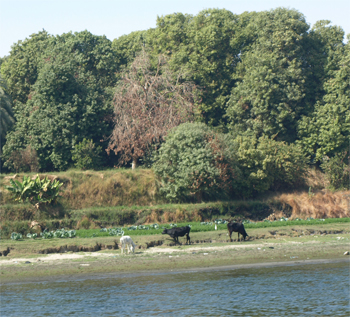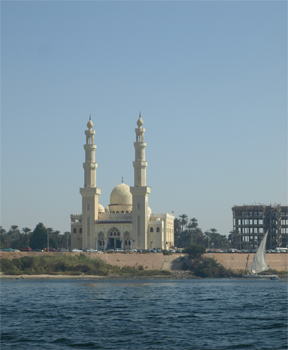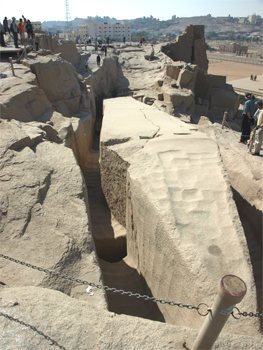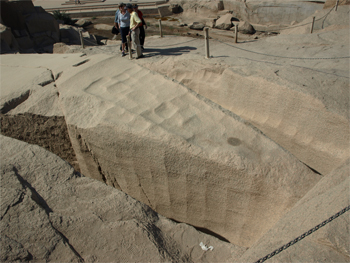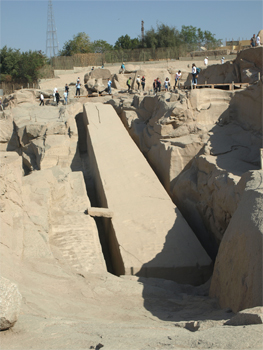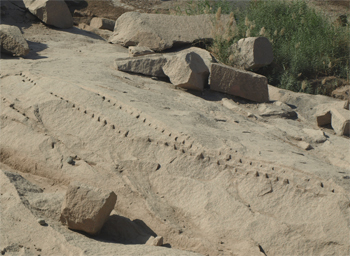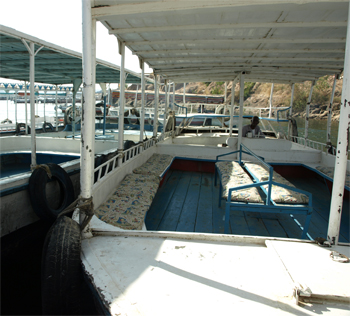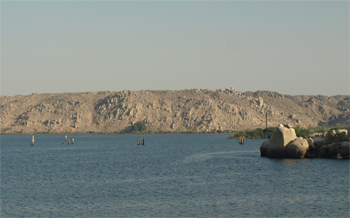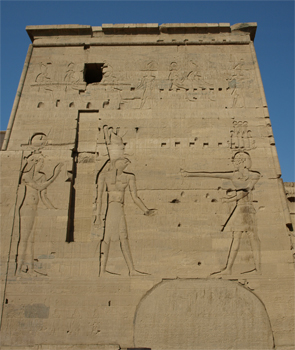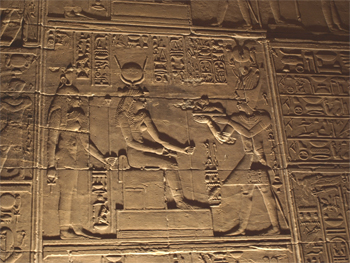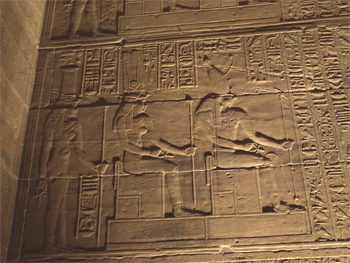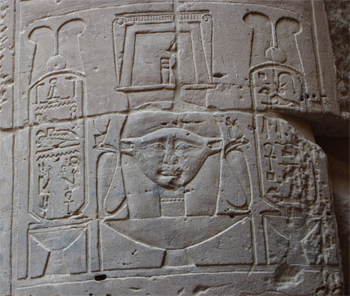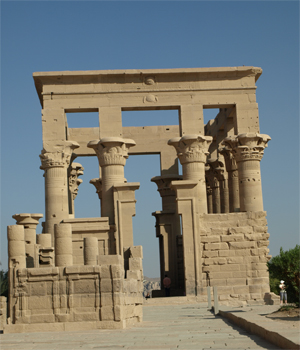.Fri., 1/28/11 - Aswan
We were up at 5, breakfast at 5:30, and then off to the Abu Simbel airport for our short flight to Aswan and the next part of our trip cruising aboard the River Tosca boat on the Nile River.
River Tosca
|
River Tosca |
Pool on the River Tosca
|
The River Tosca was clearly a step up from the Prince Abbas. We had a luxurious, large room, huge bathroom, and sliding doors/windows which opened to give a balcony effect along the whole length of the room.
|
|
|
Before getting on the boat we took an "optional" tour to a "typical" Nubian village. We got on a little riverboat and cruised down stream past the first cataract, an area of rapids and shallow depth and impressive rock islands. The area is now a bird sanctuary and we saw lots of pampas grass, mimosa trees, and date palms. Among the birds we saw were ibis, gray heron, purple swamp hens with red beaks, cormorants, spur wing plover, dove, osprey, and hundreds of pigeons - no wonder Egyptians eat them! Later we also saw a kingfisher.
Small river boat
|
Felucca on the river |
Hieroglyphs and high water marks
|
Cormorants |
Pampas grass |
River scene - note power lines from the Aswan dam
|
Approaching the colorful Nubian village of Kusha
|
Nubian village of Kusha |
Our local guide took us to a home visit in the village in Kusha between the third and sixth cataracts, which once was a gold mining community of Old Nubia. Nubia means "Land of Gold." The houses are built with local stone and mudbrick and then have decorative painting on their outer walls and around windows and doors. It makes each house unique. Houses usually have domed ceilings/roofs over certain rooms, which make that room cooler in the summer heat. Nubian society is matriarchal. The new husband moves in with the girl's family. An extended family lives under one roof, which has many rooms (separate bedrooms, small kitchen, and large open family and living rooms) and furniture made out of date palm leaves and covered with woven throws. We were served the national drink of hot mint tea in the family room and looked at the household pets - crocodiles, which bring luck to the family and are released into Lake Nasser as they get too large.
|
|
Domed ceilings/roofs
|
Family room |
Family room
|
Household pets/good luck charms |
Wall decorations |
Furniture made from date palm leaves
|
We explored the rooms of the house and the items made by the family that were offered for sale (scarves, baskets, carvings, spices). From the roof we could look down on the street activities - camels, donkey carts, and street vendors.
|
|
Loom
|
Spices for sale |
From the roof
|
House across the street - note crocodile on wall |
Another colorful house
|
Markets |
Spices and clothes
|
Camels all over! |
It was an interesting view of life today after all of the antiquities we have been looking at. On the way back up the river we saw tombs of Aswan nobles cut into the hillside stone, some livestock, and, as we approached Aswan, the beautiful new mosque.
|
Tombs for Aswan's nobles
|
Livestock along the river bank |
New mosque in Aswan
|
After a quick lunch aboard the Tosca, we went to the pink granite quarry where Queen Hatshepsut's unfinished obelisk lays on its side still attached on the bottom edge. Supposedly her son, Tuthmosis III, from whom she usurped power, put cracks in it in 1500 BC so it could not be finished. Three sides of an obelisk were chiseled out with stone hammers and forged bronze chisels and then cedar wood was wedged into holes beneath the stone and swollen with water until the stone cracked free. The size of the stones cut out this way is amazing. The obelisk would then have been rolled on palm tree trunks down to the river, put across several boats, and floated to their destination. (Link: Obelisk 1; Obelisk 2)
Unfinished obelisk of Queen Hatshepsut
|
Unfinished obelisk of Queen Hatshepsut |
Unfinished obelisk of Queen Hatshepsut
|
Quarry showing location of cedar wood wedges |
Next our bus took us to a ferry dock where our ferryman fought to push away from the dock and take us across to the island of Agilka where the Temple of Isis at Philae was relocated. Most of the Temple was built between Ptolemy 2 (285-246 BC) and the Roman Diocletian (AD 284-305). The original temple, on the island of Philae, was under water even before the high dam was built and tourists took rowboats to float around it. UNESCO and Egypt saved the buildings by making a dam around it with pilings and sand and then pumping out the water, cutting it into blocks and moving and reassembling it on its present site. This took ten years. (Link: Philae)
Our boat - you should have seen the jockeying for position to get away from the dock - like getting onto the Broad Street Subway at rush hour, except it was boats pushing boats
|
Ferry dock - the boats on the inside have to push their way through the others to get out - stupid system |
Temple of Isis at Philae
|
Pilings show location of Temple before UNESCO moved it to higher ground |
Temple of Isis - First Pylon
|
Temple of Isis - Colonnade in outer courtyard |
Temple of Isis
|
Temple of Isis - Second Pylon - Pharaoh offering sacrifice to Horus and Hathor (left) |
Temple of Isis
|
Temple of Isis |
Temple of Isis - Hathor in "holy cow" hieroglyphic
|
Graffiti through the ages |
|
Kiosk of Trajan |
Temple of Hathor
|
The temple was used as a Christian church at some point and the faces of the gods are scratched off and crosses have been carved into some walls. A scene in the inner sanctum has Isis with her wings spread around Osiris and Ptolemy giving her offerings. On the opposite wall Isis has little Horus on her lap (like Mary and Jesus) and is receiving offerings. The inner sanctum also has a stone resembling a Christian altar. The hypostyle has several chambers including one that was a type of library with the special recipes for making perfumes. Outside the temple is a rather plain kiosk built by the Roman Emperor Trajan. The acacia trees were in bloom around the kiosk with their fragrant yellow blooms.
|
We were all exhausted and voted to skip a perfume factory visit. As we drove back to the boat, we had to detour around a demonstration blocking the streets of Aswan. We have been watching BBC and CNN news but hope Mohamed will get us safely back to Cairo and on our way out of Egypt.
Dinner was a wonderful meal. We had champagne and an introduction to the boat and crew. We skipped the belly dancing in the lounge after dinner.
